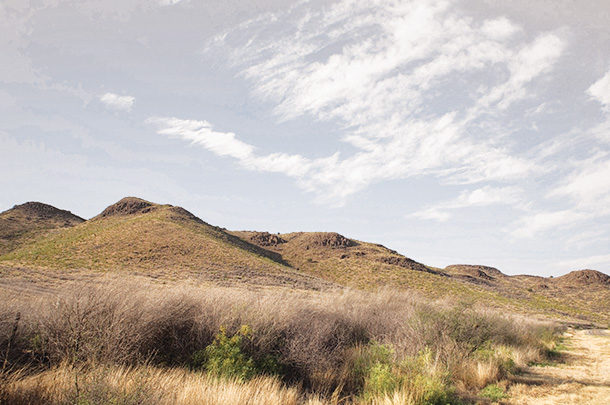This spring, Texas A&M AgriLife extension specialists came together from animal science, rangeland, wildlife and fisheries management, along with agricultural economics to discuss a timely topic – drought. Currently, over 75% of Texas is classified in a D1 (moderate drought) to D4 (exceptional drought) classification by the U.S. Drought Monitor, which is comprised of the National Drought Mitigation Center (NDMC) at the University of Nebraska – Lincoln, the National Oceanic and Atmospheric Administration (NOAA), and the USDA.
Although this cycle represents a significant challenge to ranchers and rangeland managers, it is not a new concept on rangelands. And while there’s nothing to fear, it’s definitely something to prepare and have a plan for. Which is why this group at TAMU – led by Justin Benavidez, extension agricultural economist – came together to host “Developing a drought management plan for the ranch” – a four-part webinar series devoted to risk management tools, research-based drought and wildfire mitigation strategies, and economic options to consider for herd management during drought.
Drought is just another phase, another stage in the cycle, which producers need to anticipate, not to mention a fundamental characteristic of rangelands everywhere. Staying in tune with the landscape’s natural rhythm allows ranchers and rangeland managers to make more-informed management decisions that benefit both the economics and the landscape.
Ranchers and managers need to be able to be flexible enough to coordinate and move when range signals are given; that’s working with nature and embracing a commitment to stewardship at the highest level. Maximizing every drop of average rainfall each year requires attention to every detail. Recognize the situation, know the rangeland and know the soils.
The first instinct
For rotational systems, the instinct to open all the gates when dry times hit is counterproductive to managing a way out. Conventional thinking might assume we’re increasing forage supply, when in reality, we need to assess forage demand. Opening gates gives livestock control over the grazing system, providing access for cherry-picking powerhouse grasses. These desirable, native perennial grasses take a huge hit because of overutilization, which will greatly affect root development, structure and maintenance at a time when deep roots are a most valued survival trait.
Repeated grazing without plant recovery not only leads to bare ground with high soil-surface temperatures, but also to inhibited roots that decrease soil health, fertility, water infiltration, organic matter and microbial function. From there, soil compaction begins to increase, building a hydrophobic layer on top of the soil surface. Water runoff increases, inevitably increasing potential for water and wind erosion. And when economic rains fall again, there will be minimal ground cover to capture it.
E.J. Dyksterhuis said in 1951, “The man who has a short pasture needs a rain much worse than his neighbor who has ample forage on the range…but when rain comes, it does the least good for the fellow who needs it most.”
Central to this is having boots on the ground for developing a working knowledge or inventory of the grasses occupying rangeland pastures. When the dry period ends and moisture returns, grasses recover better from an established position instead of ground level with depleted reserves. With a conservative utilization rate, sufficient residual forage can regenerate regrowth more efficiently than grasses nubbed to a pedestal. Because when plant roots shrink to compensate for the lack of leaves gathering sunlight, there’s also limited root structure to capture soil moisture.
The big picture
Managing for dry conditions requires both an aboveground and belowground understanding, but more importantly a systems approach from a big picture assessment of pastures. The four most important things that determine the success of any grazing management program are timing of grazing, frequency of grazing, intensity of grazing and the opportunity to regrow following grazing.
Grazing periods should be kept short to minimize the number of times a plant is grazed during a grazing period. Stocking rate should not be greater than carrying capacity, which (obviously) fluctuates with rainfall. That means stocking rate must be flexible enough to be reduced during drought. The grazing management program should also allow adequate growing-season recovery for desired plants. Alternating the time when pastures are grazed from year to year also promotes diversity.
Here are some questions to ask when recognizing an extended dry period:
- What types of soil comprise the pastures? Identify the soils that are more prone to compaction, low forage production, and shorter grasses with shallow roots, as well as more productive locations to better understand inventory potential. Soil qualities and grass production potentials can be found on the Web Soil Survey as a free resource.
- Assess current bare ground percentage of the landscape and develop strategies to promote ground cover. Moving salt and minerals to varying locations in the pasture to attract stock to underutilized areas or leaving brush skeletons can provide the added advantage nature needs.
- How much utilization is occurring on desirable native grasses? If repeatedly grazed, the plant can lose the ability to compete with its neighbors for soil moisture and nutrients, especially in times of stress, like drought. How these grazing events are managed either helps or hurts the more-desired plants’ chances in the competition for resources with less-desirable neighbors, such as cacti and woody plants, which benefit from very little, if any, grazing pressure.
- How much rest is each pasture receiving? A common mistake under drought condition is to rotate return grazing of a pasture without regrowth or recovery, being forced into rotational overgrazing. If livestock return to an area too soon, plant vigor may be damaged. Therefore, grazing recovery periods should always be shortened or lengthened to reflect current growing conditions, which are determined by temperature and moisture. As conditions become drier, recovery periods should increase. If the number of herds and pastures in a grazing unit is fixed, slow growth means that grazing periods must also be lengthened by reducing grazers.
All of these factors compute how rangeland will perform through tough times. Like ranchers, rangelands are resilient. They’ve weathered floods, hail and ice storms, tornadoes, wildfires and droughts before. These events are cyclical. Having a plan in place to help make tough decisions can make all the difference.
Reach out to your local county extension or National Resources Conservation Service offices for more information and assistance in building a drought management plan.







